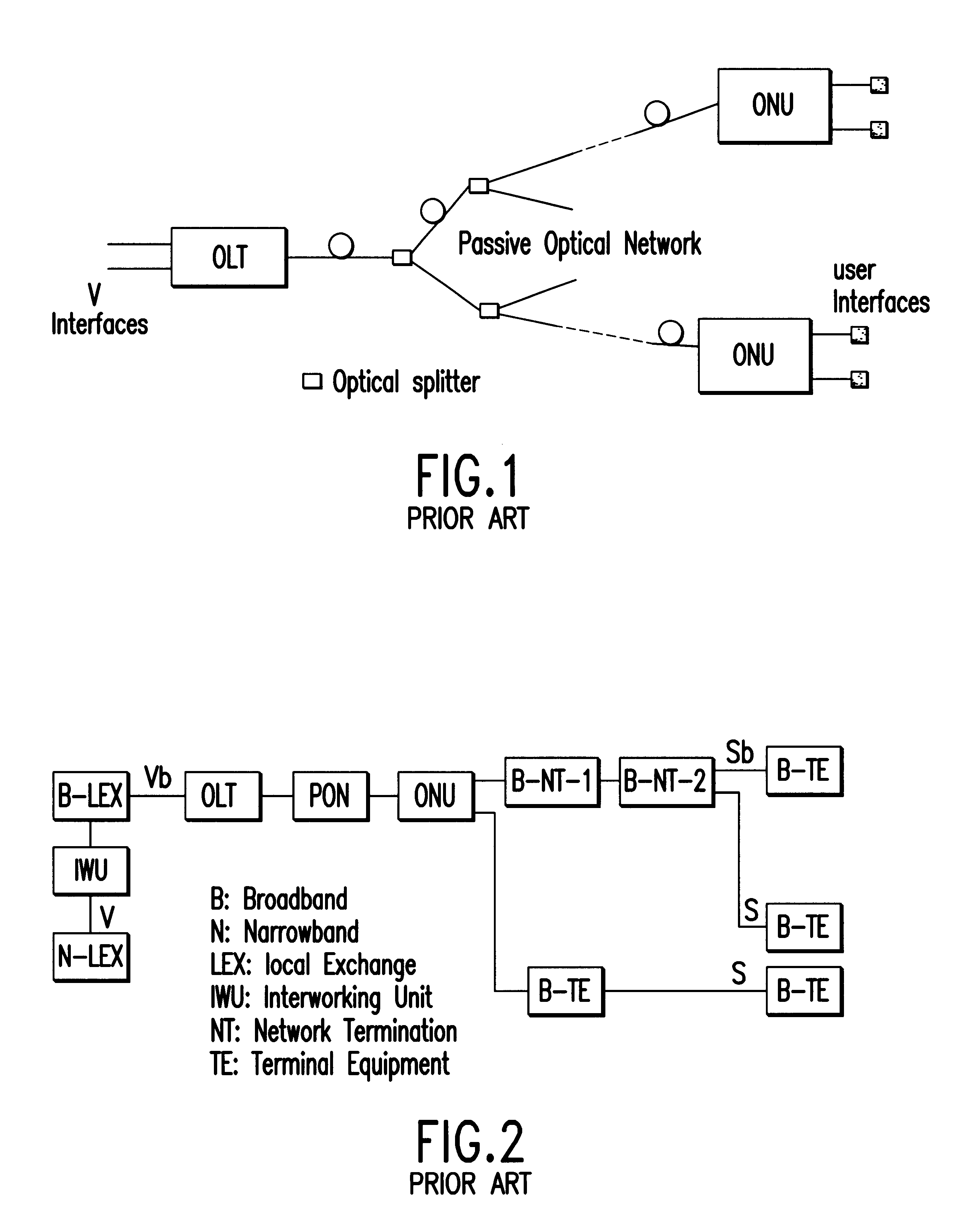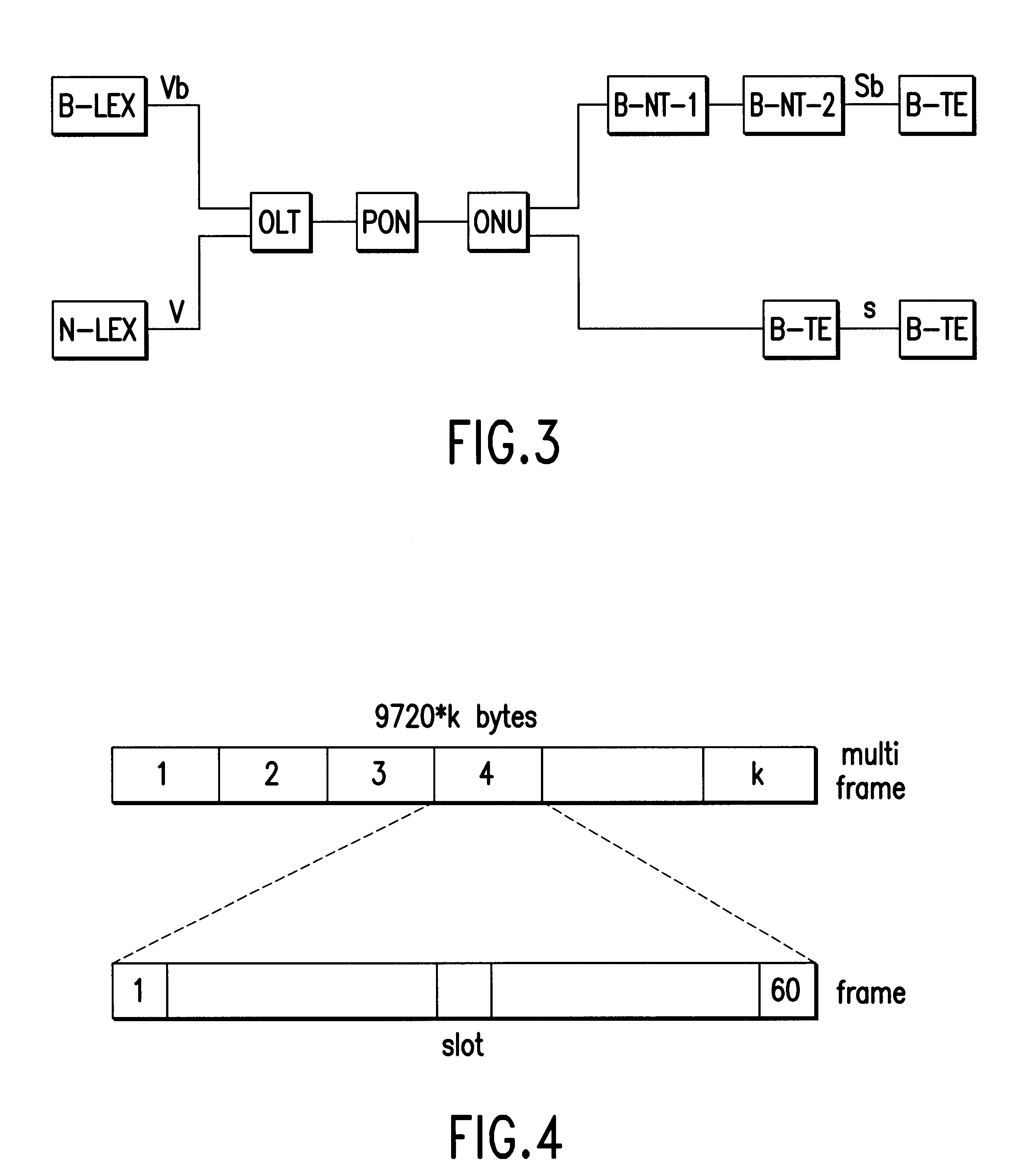Method for structuring of digital data which can be transferred in both directions on a passive optical network (PON) in a PON TDMA system
a technology of passive optical network and digital data, applied in the field of digital data structure, can solve the problems of deteriorating the quality of service, unable to modify and unable to adapt to the results of the solution
- Summary
- Abstract
- Description
- Claims
- Application Information
AI Technical Summary
Benefits of technology
Problems solved by technology
Method used
Image
Examples
Embodiment Construction
Making reference to functional diagrams of FIG. 2 already described, relevant to a reference configuration of the known type of a broad band access system and to the diagram in FIG. 3 showing the reference configuration of an access system according to the present invention, it is possible to immediately evaluate and identify in practical terms the differences in architecture and the advantages offered by the new system compared to the previous one.
In a system based on cellization in the transmission phase and decellization in the tributary units receipt phase, as shown in the diagram of FIG. 2, an information flow organized as a STM-1 frame complying with the specifications and international standards, coming for instance from a telephone public exchange or from a narrow band switching node (N-LEX), is processed inside the "Interworking Unit" IWU, producing a digital flow organized in tributary transport modules TU-12 which are cellizated before being fed to a broad band local swit...
PUM
 Login to View More
Login to View More Abstract
Description
Claims
Application Information
 Login to View More
Login to View More - R&D
- Intellectual Property
- Life Sciences
- Materials
- Tech Scout
- Unparalleled Data Quality
- Higher Quality Content
- 60% Fewer Hallucinations
Browse by: Latest US Patents, China's latest patents, Technical Efficacy Thesaurus, Application Domain, Technology Topic, Popular Technical Reports.
© 2025 PatSnap. All rights reserved.Legal|Privacy policy|Modern Slavery Act Transparency Statement|Sitemap|About US| Contact US: help@patsnap.com



